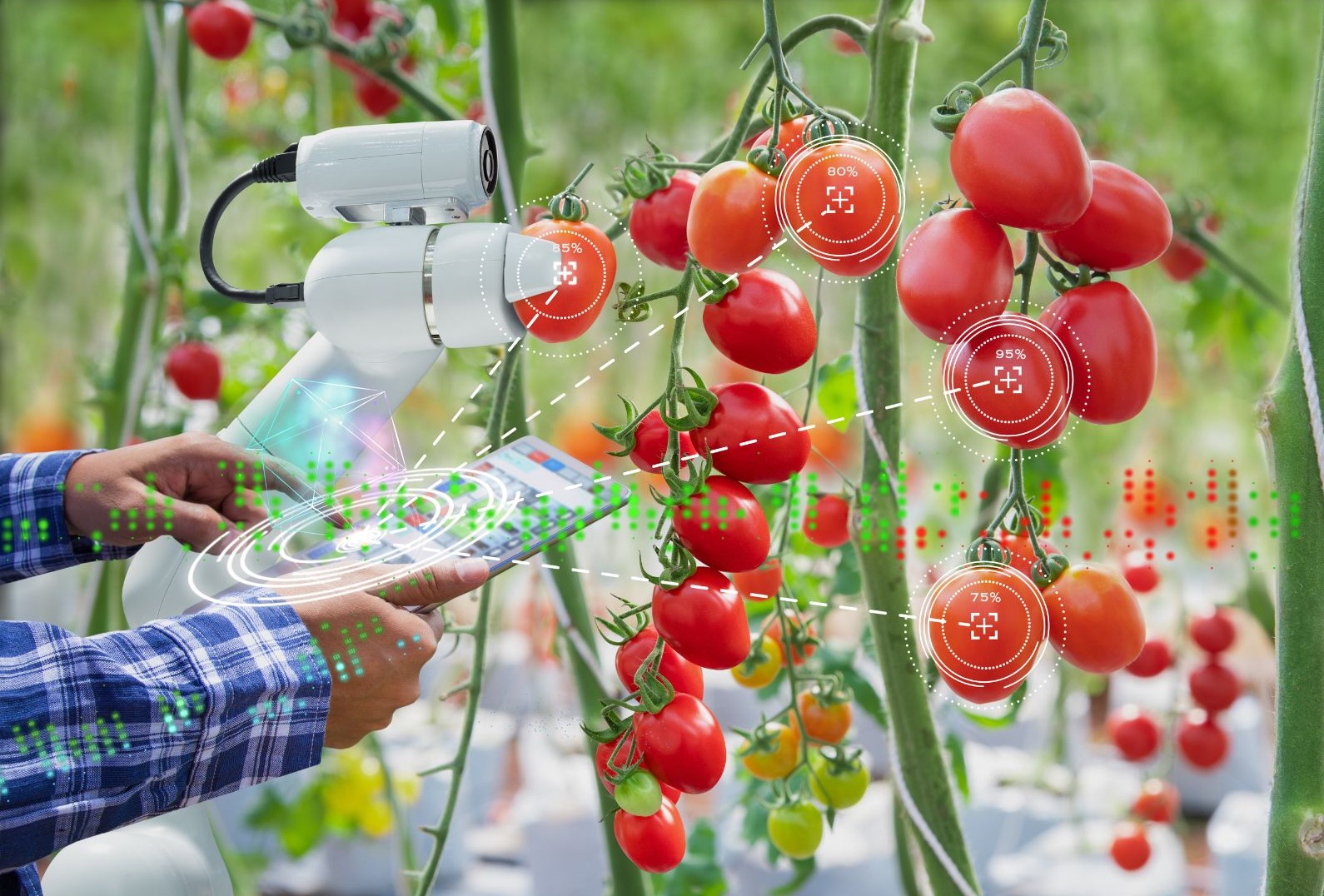Automation in harvesting and processing of hydroponic crops

This post is also available in:
This post is also available in:
![]() Español (Spanish)
Español (Spanish) ![]() Ελληνικά (Greek)
Ελληνικά (Greek)
Technology plays a significant role in streamlining and optimizing the harvesting and processing of hydroponic crops, including washing, drying, packaging, and storing. Here’s how technology (smart farming) is used in each stage of the process:
Harvesting
Automated Harvesting Systems: Technology enables the development of robotic or automated harvesting systems that can identify mature crops using computer vision and harvest them efficiently without manual labor.
Harvesting Sensors: Sensors can be integrated into the hydroponic system to monitor plant maturity and readiness for harvest. This data can trigger automated harvesting or provide alerts for manual harvesting.
Washing
Automated Washing Equipment: Technology facilitates the use of automated washing systems that efficiently clean harvested hydroponic crops, removing dirt, debris, and any residual nutrient solutions.
Water Recycling: Smart water management systems can recycle and reuse the washing water, reducing water wastage and ensuring sustainability.
Drying
Controlled Drying Environments: Technology allows for precise control of drying environments, including temperature and humidity, to ensure optimal drying conditions for the harvested crops.
Dehumidifiers: Dehumidification equipment can be used to remove excess moisture from the drying area, accelerating the drying process and preventing mold growth.
Packaging
Automated Packaging Machines: Technology enables the use of automated packaging machines that efficiently weigh, fill, and seal packages of hydroponic crops according to predefined settings.
Smart Packaging Solutions: RFID tags or QR codes can be incorporated into packaging to track and trace the origin, quality, and handling of the produce throughout the supply chain.
Labelling and Traceability
Labelling Systems: Automated labeling systems can be used to apply product labels with batch information, nutritional facts, and expiration dates to each package.
Traceability Software: Traceability software allows growers to track the entire journey of the produce from the hydroponic system to the end consumer, ensuring transparency and quality assurance.
Storage
Climate-Controlled Storage: Technology allows for climate-controlled storage facilities where temperature, humidity, and ventilation can be adjusted to preserve the quality and freshness of the harvested crops.
Monitoring Systems: Sensor-based monitoring systems can be installed to track storage conditions and ensure the stored product remains within optimal parameters.
Inventory Management
Inventory Software: Inventory management software can be used to keep track of stock levels, track product turnover, and facilitate efficient order fulfillment.
Supply Chain Integration
Technology enables seamless integration of the entire supply chain, from farm to retail, optimizing logistics and reducing product spoilage.
By leveraging technology in the harvesting and processing of hydroponic crops, growers can improve efficiency, reduce labor requirements, ensure product quality, and enhance overall crop value and market competitiveness.
Technology in hydroponics farming can help improve the productivity, quality, sustainability, and profitability of crop production. It can also help overcome some challenges and limitations of conventional soil-based agriculture, such as land scarcity, water scarcity, soil degradation, climate change, etc.
Further reading
A Beginner’s Guide to Hydroponics Farming: From Seed to Harvest
Different types of hydroponics systems and how they work
Challenges of Hydroponics Farming and how to overcome them
The Potential for Combining Hydroponics and Crop Circle Farming with Traditional Practices
Technologies in Hydroponics – Automation, Control and High Performance
Automation in harvesting and processing of hydroponic crops
AI-based Pest detection in hydroponics farming
References :
- Tao, L. Zhao, G. Wang, and R. Liang, “Review of the internet of things communication technologies in smart agriculture and challenges,” Computers and Electronics in Agriculture, vol. 189, article 106352, 2021.
- Qazi, B. A. Khawaja, and Q. U. Farooq, “IoT-equipped and AI-enabled next generation smart agriculture: a critical review, current challenges and future trends,” IEEE Access, vol. 10, pp. 21219–21235, 2022.
- Das, J. Sahoo, M. B. Raza, M. Barman, and R. Das, “Ongoing soil potassium depletion under intensive cropping in India and probable mitigation strategies. A review,” Agronomy for Sustainable Development, vol. 42, no. 1, pp. 1–26, 2022.
- DIGITAL AGRICULTURE 2 – e-Book June 2023 – Marco Brini 33 MARCO BRINI linkedin.com/in/marcobrini/
- Sharma, M. Georgi, M. Tregubenko, A. Tselykh, and A. Tselykh, “Enabling smart agriculture by implementing artificial intelligence and embedded sensing,” Computers & Industrial Engineering, vol. 165, article 107936, 2022.
- Adidrana, A. R. Iskandar, A. Nurhayati et al., “Simultaneous hydroponic nutrient control automation system based on Internet of Things,” JOIV: International Journal on Informatics Visualization, vol. 6, no. 1, pp. 124–129, 2022.
- G. Rezk, E. E.-D. Hemdan, A.-F. Attia, A. El-Sayed, and M. A. El-Rashidy, “An efficient IoT based smart farming system using machine learning algorithms,” Multimedia Tools and Applications, vol. 80, no. 1, pp. 773–797, 2021.
- Manikandan, S. Prabhu, P. Chakraborty, T. Manthra, and M. Kumaravel, “IoT-Based Smart Irrigation and Monitoring System in Smart Agriculture,” Futuristic Communication and Network Technologies, Springer, Singapore, pp. 45–56, 2022.









































































